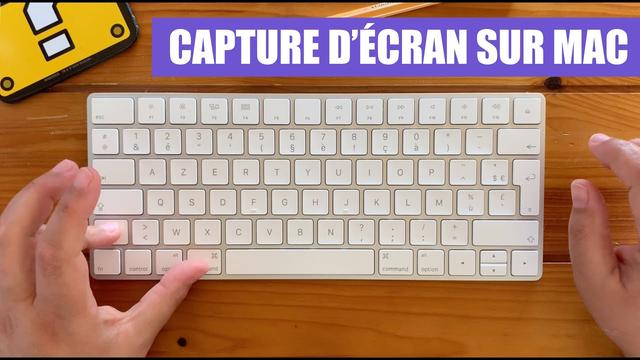Screenshot Screenshot is a simple way to share what you see on screen. If it is an error, you can take a photo and send it to technical support. If it's a social media post, you can capture the moment and share the image with your friends and followers.
Screen capture tools for Mac have always been easy to use, but somewhat rudimentary. You could capture just about anything, if you knew the right keyboard shortcuts. Since the release of Mojave, macOS now has a built-in screenshot tool — similar to Windows — that lets you capture screenshots with a single click.
To open the snipping tool, go to Launchpad > other > Screenshot, or use the keyboard shortcut Shift + Command + 5. The floating toolbar offers options to capture the entire screen, a selected window, or a custom section of the screen. You can also capture video of the entire screen or a custom selection. Here's how to capture what's on your screen.
Capture the entire screen
You can take a screenshot of the entire screen by clicking the Snipping Full Screen icon in the Screen Capture toolbar, then tap Snipping. Alternatively, use the shortcut Shift+Command+3 to instantly take a screenshot.
Capture a custom selection
To capture a specific part of your screen, use the Toolbar's Capture Selected Window function, or press Shift + Command + 4 and your pointer turns into a crosshair.

Click and drag the crosshairs so that it covers the area you want to capture. Release to capture the selected area or press the Esc key to cancel. By holding down the Shift, Option or Spacebar key, you can change the shape, size and position of the selection area before capturing an image.
To take a screenshot of a specific window or menu, press Shift + Command + 5 and select the Capture Selected Window option from the toolbar. The pointer changes to a camera icon. Move the camera over a window to highlight it, then click to save the image. You can also switch between capturing a custom selection and entering a specific menu by pressing the spacebar.
Related to this article:Portable batteries are becoming essential for your hikes and camping tripsTake an image of the Touch Bar
If you have a Mac with a Touch Bar, you can take a screenshot of it by pressing Shift + Command + 6.
Video recording
Record a video by pressing Shift + Command + 5 and then selecting Record Entire Screen or Record Selected Part. When everything is ready, click Record to start capturing. Click the Stop button in the macOS menu bar to finish recording and save the .MOV file.
Change where your Mac screenshots are saved
By default, screenshots are saved to your desktop, but you can change that. Open the Snipping Tool with Shift+Command+5, or by going to Launchpad > other > Screenshot.
Click Options > Save in and select a new default location: Desktop, Documents, Clipboard, Mail, Messages, or Preview. Click Alternate Location to choose a specific folder.
Recommended by our editors
Instead of saving screenshots directly to your computer, you can send them to the clipboard by adding the Control key to any shortcut command. For example, use Shift + Command + Control + 3 to capture the entire screen, or Shift + Command + Control + 4 to grab part of the screen, then paste the screenshot wherever you want.
Change image format
By default, screenshots on Mac are saved in .png format, but they can get quite large, especially if you have a large Retina display. Switch to .jpg format with a small amount of code. Go to Launchpad > other > Terminal and type the following in the new window:
defaults write com.apple.screencapture type jpg
Enter your password if prompted, then restart the computer. Future screenshots should be saved in the preferred format you specified. You can always change it by typing the above command with PNG at the end.
Related to this article:MLB Stream: How to watch baseball online wherever you are!Alternative Options
If you prefer a third-party screen capture app, Snagit has everything you need, but it's priced at $50. The same company also offers a free program called TechSmith Capture (formerly Jing). Other free options include Skitch and LightShot, while Snappy can sync screenshots with the Snappy app for iOS.
